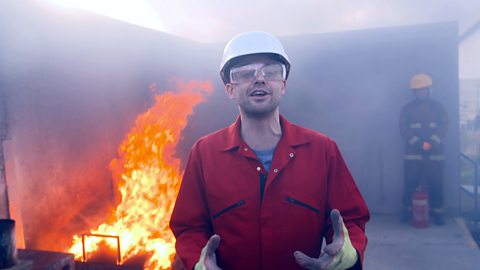PRESENTER:'We are on the trail of dinosaurs. Here on Scalby beach in north Yorkshire we've found incredible footprints and tracks left by dinosaurs roaming around here when this was a river bank, 165 million years ago.'
PRESENTER:We've discovered this amazing track of nine dinosaur footprints but I'm about to set these guys a challenge to figure out who made them.
PRESENTER:This is Will, he's a dinosaur expert and looking at this it's like a crime scene investigation.
PRESENTER:We've got people measuring stuff, chalk outlines and things but I'm thinking, what can we really know about a dinosaur just from its footprints?
WILL:Absolutely loads. So the first thing we can work out is how many toes did it have?
PRESENTER:Three OK so we've worked that out.
WILL:Got three toes. Most dinosaurs with three toes walked on two legs.
PRESENTER:OK.
WILL:So already we've got three toes, two legs.
PRESENTER:'But there's a lot more information hidden in these footprints.'
PRESENTER:Amazingly, it's possible to work out from the size of the foot how tall a dinosaur was. All you have to do is find your inner dinosaur.
PRESENTER:Rooooaar!
PRESENTER:We haven't got a dinosaur skeleton to measure but humans and dinosaur legs are made to the same pattern.
CHILD #1:75.
PRESENTER:If we find out how human foot and leg length are related we should be able to work out the same for our dinosaur. So to find out the height of a dinosaur, first measure a human.
LAUGHS
CHILD #2:76cm.
PRESENTER:-'Now divide the length of your leg by the length of your foot.'
PRESENTER:So what was my foot?
CHILD #2:30.
PRESENTER:30 and 107. Right so what did you guys have?
PRESENTER:It was 82 divided by 24.
CHILD #2:Yeah.
PRESENTER:So it's 3.4. So your leg is 3.4 times longer than your foot. 3.5, 3.4, 3.7. Cool! You've got long legs for your feet.
PRESENTER:Legs are three and a bit times longer than our feet and it turns out that that's true for dinosaurs and stuff as well.
PRESENTER:'But we have a technical challenge. Our dinosaur seems to have been on its toes, possibly because it was running. So how do we measure the length of the foot?'
PRESENTER:We want to measure the length of the footprint from heel to toe but these footprints don't include the heel so what we've done is we've got a picture of a foot from the type of animal that would have made this footprint.
PRESENTER:Will has then drawn around the footprints to match this shape so we can then measure the length of the foot.
CHILD #3:52.
CHILD #1:52!
BOTH:52.
PRESENTER:'Our human legs were around three and a half to four times as long as our feet.
PRESENTER:'If dinosaur legs are the same with 52cm feet, that gives a length of 52 x 4cm which is about two meters.'
PRESENTER:There it is. That is the length of the leg. Look at that compared to mine.
PRESENTER:So if you hold the 200 mark down on the ground that is the hip height of the dinosaur. Imagine the rest of it!
PRESENTER:'Our dinosaur was probably an Ornithopod, which means "bird-footed" dinosaur because it has these three toes, like a bird.
PRESENTER:'Remember, we worked out, the dinosaurs leg was about two meters at the hip. Around the same height as me and it walked on two feet so its skeleton would have looked like this.
PRESENTER:'Just look how big the Scalby beach Ornithopod was! About 4.5m from nose to tail.
PRESENTER:'Way back in time, humans and dinosaurs, shared an ancestor.
PRESENTER:'Although we are very different shapes, you can see that our skeletons have the same arrangement of bones, which animals have shared for millions of years.
PRESENTER:'Thanks to our ancient link with dinosaurs we were able to measure our dinosaur's height from our own legs, and the footprints on Scalby beach.'
This is an effective example of how evidence from fossils can be used to tell us more about dinosaurs that lived millions of years ago.
The three-toed footprint suggests that this Ornithopod dinosaur walked on two legs, not four.
The total length of the footprint from heel to toe is estimated from the footprint.
Similarities between human and dinosaur skeletons are shown to suggest that dinosaurs and humans shared a common ancestor millions of years ago.
The relative sizes of human feet and legs are measured by the children, and used to calculate the ratio of leg:foot length.
This same ratio is then applied to the estimated length of the dinosaur footprint and used to predict the leg length of the dinosaur, and hence its overall height.
This film is from the BBC series, Operation Awesome in which pupils explore a range of amazing practical science challenges with presenter Steve Mould.
Teacher Notes
Key Stage 2:
This is an effective example of how evidence from fossils can be used to tell us more about dinosaurs that lived millions of years ago.
Your pupils could research information and find pictures about the different types of dinosaurs that roamed the Earth millions of years ago, and link their features to predict/explain where they lived and what they ate.
Pupils could then create a timeline for evolution, mapping on it significant events, such as when the dinosaurs lived, when man first appeared etc.
They might then consider how specific adaptations made animals more or less suited to their environment and the impact of changes in the environment over time.
Key Stage 3:
This could provide a good example of how evidence from fossils can be used to tell us more about species of animals and plants that were alive millions of years ago.
It could be used as a stimulus for further work on adaptation of species and how species have changed over time through natural selection.
They might suggest reasons why the dinosaurs became extinct, and link this to more recent examples of species that are threatened with extinction.
Curriculum Notes
This short film will be relevant for teaching science at Key Stage 2 or Second Level in Scotland, or biology at Key Stage 3 or Third Level in Scotland.
It could be used to teach the topics: Fossils, Planet Earth (prehistoric animals), Evolution and Genetics & Evolution.
More from Operation Awesome
Will pulleys allow children to beat Britain’s strongest man? video
Britain’s strongest man pulls a 12 tonne truck. Steve Mould challenges a group of 9 and 10 year olds to use the science of pulleys to do the same.
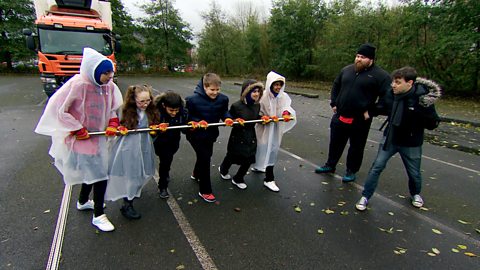
Will gears let children pull a piano uphill with their bikes? video
Presenter Steve Mould challenges a group of cycling 10 and 11 year olds to pull a piano up a hill. They investigate gears to see how bikes could complete the challenge.
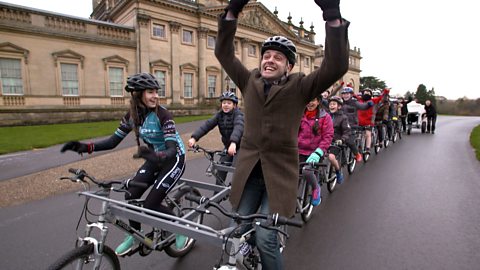
Helicopter rescue and the science of floating. video
Steve Mould’s treasure is lost underwater. Children use the science of floating and displacement to raise it from the bottom of the pool with the smallest amount of air.
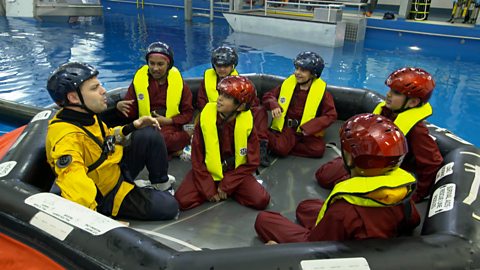
How to make the fizziest bath bomb. video
Challenged by Steve Mould to make the fizziest possible bath bomb, children test a range of recipes. They work out how to measure ‘fizziness’ (the amount of CO2) and make sure it’s a fair test.
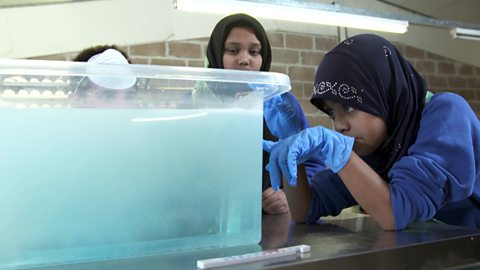
How dinosaurs footprints get made in solid rock. video
A group of children are challenged to find real dinosaur footprints on the beach – and discover why it takes many millions of years for footprints to be made in solid rock.
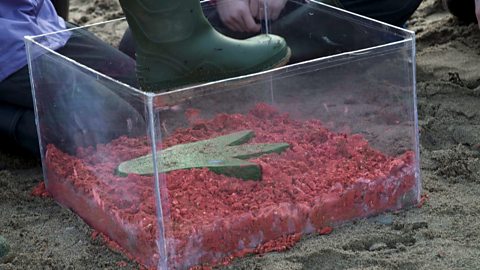
Seeing through smoke - the heat camera. video
A group of 10 and 11 year olds have to rescue someone from a smoke filled building in the dark. They get to choose a special camera to help. How will they pick the right one?
